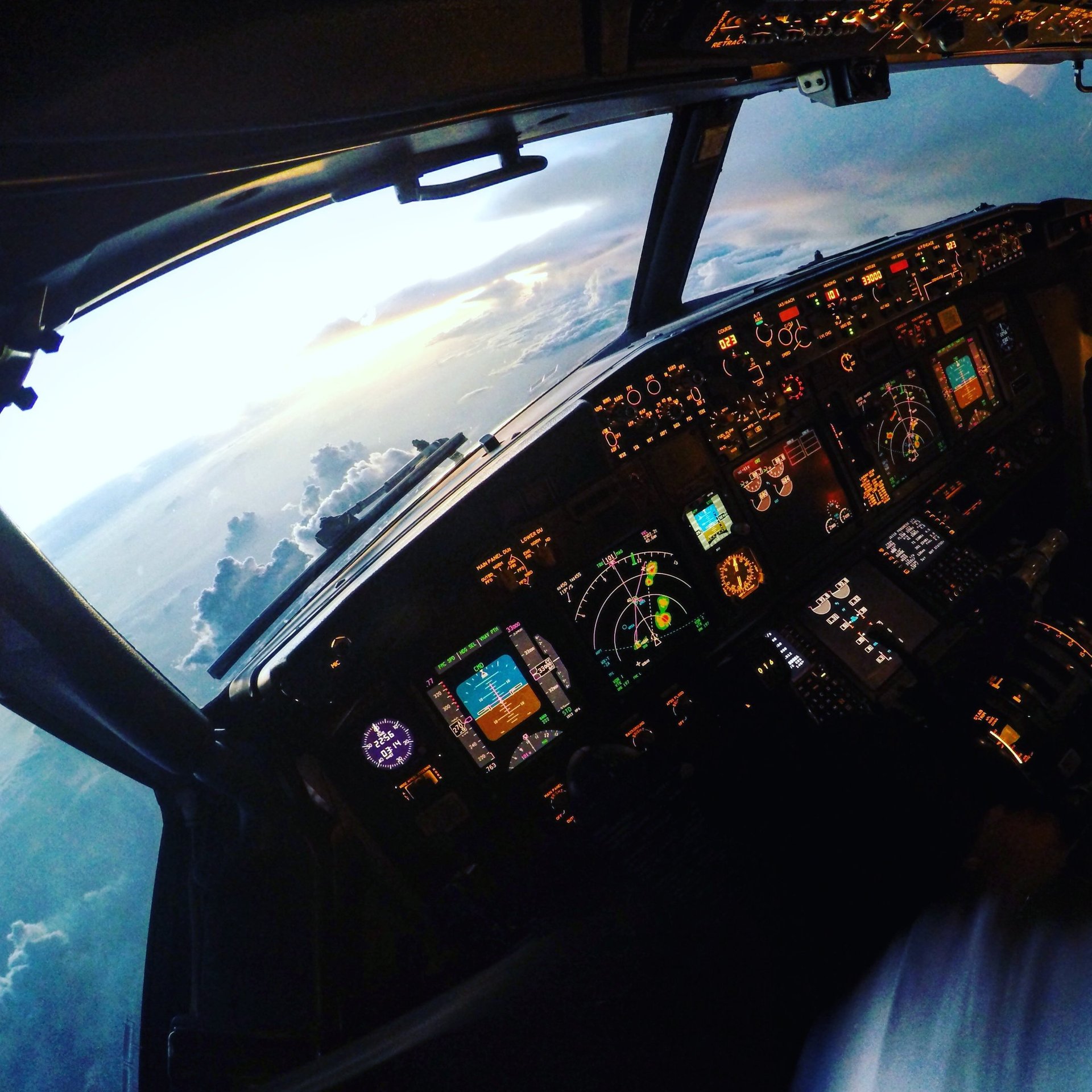
The Captain's Leap.



COMMAND MIND training.
The core aviation skills of communication, situational awareness (SA), and decision-making are intimately interwoven and synergistic, meaning that they rely on and enhance each other to achieve optimal performance as a Commander.
These three skills are considered essential Command Skills or Core Competencies required for an effective Captain.
The optimal integration of these skills is described as a process where Situational Awareness is the critical input, feeding into Decision Making (the output), which is executed and validated through effective Communication.
1. Situational Awareness as the Foundation for Decision Making.
Situational Awareness (SA) is the starting point.
for the entire decision-making process. Good SA is defined as perception matching reality, which enables a pilot to act upon that perception in a timely and rational manner.
Recognition and Problem Solving.
To make a decision, a Commander must first recognize that a problem exists and define what the problem actually is. This recognition is accomplished through effective monitoring and good SA, particularly Level 3 SA (Projection), which involves thinking ahead of the aircraft.
Projection and Anticipation.
Good Level 3 SA is required to project possible future consequences and choose safe, viable, and practical courses of action. Commanders who operate with Level 3 SA are proactive, anticipating events and having contingency plans, which is vital for effective Threat and Error Management (TEM).
Interrelation with Management Skills.
SA is not isolated; it is inextricably linked with Monitoring, Workload Management, Risk Management, and ultimately affects Judgement and Decision Making.
2. Communication as the Connector and Validator.
Communication is referred to as the "glue that holds a team together". A Captain's ability to communicate effectively directly determines how well the team functions. Communication links the individual awareness and decision-making processes into a cohesive crew action.
Sharing Situational Awareness.
Good crew SA is achieved by maintaining an accurate shared mental model. The Captain achieves this by communicating their perception of the problem or situation to the crew. Sharing the mental model clarifies the situation and allows other team members to cross-check the accuracy of the perception, helping eliminate or mitigate potential errors.
Executing Decisions (Communication of Intent).
Once a decision is made, the Captain must use Communication of Intent to transfer thoughts, intentions, goals, or decisions to the team. This is vital for implementation because it ensures that everyone understands the common goal and is working toward it effectively.
Feedback and Review.
Communication is a continuous two-way process. Feedback is essential for the Commander to ensure the message was correctly interpreted and understood by the receiver. This feedback mechanism forms the "Review" step in the decision-making process, ensuring that the decision put into action is achieving the desired outcome.
3. Decision Making as the Output.
Decision Making (Problem Solving and Decision Making) is the observable output of the judgment process, heavily relying on the quality of the SA input and the subsequent communication and collaboration.
Informed Choice.
The decision itself involves choosing the best option after analyzing multiple sources of information (gathered via SA and Communication) and balancing conflicting outcomes, primarily by assessing and managing associated risks.
Dependence on Other Core Competencies.
Decision making cannot be done in isolation; it requires Core Competencies such as Situational Awareness, Communication, Threat and Error Management (TEM), and Task and Workload Management. TEM is particularly relevant, as it promotes strategies to avoid threats and detect and correct errors, thereby protecting the decision process.
Action and Results.
A decision must be coupled with necessary action to achieve results. Good communication skills are essential to provide clear direction and delegate tasks, implementing the decision effectively.
Holistic Integration (The Command Jigsaw Puzzle).
The optimal performance of a Commander stems from holistically integrating these capabilities, much like assembling a jigsaw puzzle where all the pieces are synergistic and inter-related.
For example, to be an effective Commander:
Sound Decision Making is required.
Decision Making requires effective Risk Management.
Risk Management requires good TEM.
TEM requires superior SA.
SA requires high-quality Monitoring.
Monitoring requires excellent Workload Management.
All these qualities must be mixed and blended with an overall level of good Communication (CRM) and Leadership.
When all elements fit together proficiently, the Captain achieves a clear, coherent Command picture and is effective.
Coaching the Pilot to Become a Captain.
The left seat of a commercial airliner is more than just a physical location—it's a command position, a symbol of ultimate responsibility, and the pinnacle of an aviation career.
The journey from First Officer (FO) to Captain is not merely an upgrade in rank; it’s a profound metamorphosis that shifts the focus from mastering the machine to mastering leadership.
While rigorous technical training ensures you can fly the aircraft with precision, coaching is what truly prepares you for the mantle of Pilot-in-Command (PIC).
The Critical Mental Shift:
From Supporting to Deciding.
As an FO, your role is to support, cross-verify, and suggest. The Captain has the final say, and the ultimate responsibility. The first major hurdle in upgrade training is the mental shift to becoming the decisive authority.
The Command Mindset.
The Buck Stops Here: As a new Captain you must internalize that every decision—from a minor routing change to an emergency diversion—is yours. Coaching focuses on building the confidence to synthesize information from the FO, dispatch, ATC, and your own judgment to make a swift, final, and safe call.
Proactive Command: It's no longer enough to react to a situation; as a Captain you must be proactive, running the pace of the operation, solving problems before they escalate, and anticipating contingencies.
Leadership Beyond the Cockpit Door.
As great Captain you are an exceptional leader who manages a multi-functional team—the flight crew, cabin crew, and ground support. This goes far beyond just flying the plane.
Crew Resource Management (CRM): Coaching reinforces the captain’s role as the central hub for CRM. This means actively soliciting input, creating an environment where a junior colleague feels safe to speak up, and managing crew dynamics to maximize performance. A truly effective Captain is a teacher and a mentor, passing on knowledge while remaining humble enough to learn from others.
Setting the Culture:
The Captain defines the safety and professionalism culture on the flight deck. By consistently adhering to SOPs, demonstrating attention to detail, and remaining calm under pressure, you lead by example. A coaching approach helps you to understand that your behavior is constantly being observed and sets the standard for your crew.
"Caring for the Crew":
Highly respected Captains go out of their way to look after their team, from coordinating smoother layovers to simply being a sociable and approachable person. This builds loyalty and a unified team dynamic.
Mastering Decision-Making Under Duress.
As a Captain, you must be the ultimate problem-solver. While technical training covers emergency procedures, coaching is helpful to develop the emotional and cognitive resilience required in high-stakes, time-critical situations.
Calmness and Composure:
The ability to remain calm in a crisis is paramount. Coaching involves scenario-based training that focuses not just on the technical solution but on maintaining a clear, focused mental state to process information and execute the best plan.
Grit and Persistence:
The aviation environment is full of variables—weather delays, technical issues, and high workload. Coaching instills the necessary "grit" to persevere through complex, challenging duty periods without succumbing to fatigue or 'get-there-itis.'
Communication: Clear, Concise, and Authoritative.
From pre-flight briefings to coordinating an urgent diversion, clear communication is the linchpin of aviation safety.
Briefing & Debriefing Excellence:
A Captain must conduct a comprehensive briefing that clearly outlines the plan, highlights threats, and assigns duties. Coaching sharpens your ability to be articulate, authoritative, and concise, ensuring the entire crew understands the mission.
External Command Presence:
Communicating with ATC, dispatch, and even passengers (in non-routine situations) requires a tone of confidence and authority. Coaching helps you to develop this "command voice" while remaining respectful and professional.


